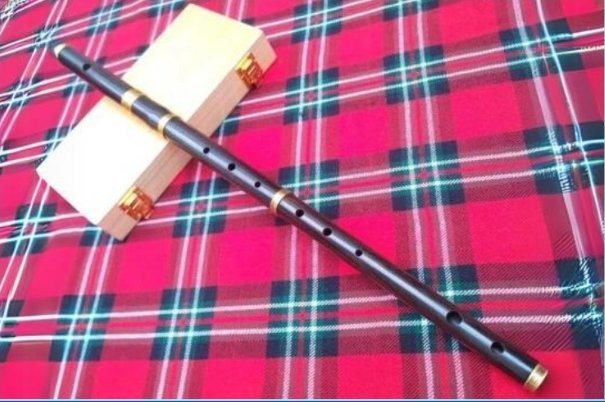Wooden flutes have a storied legacy that spans across cultures and centuries, resonating with the echoes of ancient rituals and contemporary compositions alike. Crafted from the finest hardwoods and imbued with the artistry of skilled craftsmen, wooden flutes possess a timeless allure that captivates both musicians and listeners. With their warm, resonant tones and rich, velvety timbre, wooden flutes have earned a revered place in the pantheon of musical instruments, serving as vessels of cultural heritage and conduits of creative expression. In this exploration of craftsmanship, we delve into the intricate art of wooden flute making, uncovering the secrets behind their distinctive sound and enduring appeal. Join us on a journey through the history, anatomy, and sonic landscape of these enchanting instruments, as we unravel the mysteries of how wooden flutes produce their unique and captivating sound.
Importance of Wooden Flutes in Different Cultures
The significance of wooden flutes transcends geographical boundaries, with variations of this instrument found in diverse cultures around the globe. In indigenous communities, wooden flutes are often imbued with spiritual significance, believed to possess the power to bridge the gap between the earthly realm and the realm of the divine. In some cultures, wooden flutes are used in sacred rituals and ceremonies to invoke blessings, heal the sick, and honor ancestral spirits. In others, they are employed as tools for storytelling, transmitting oral histories from one generation to the next. Regardless of the specific cultural context, wooden flutes serve as a symbol of cultural identity and heritage, embodying the traditions and values of the communities that create and cherish them.
Anatomy of a Wooden Flute
Materials Used in Crafting a Wooden Flute
Crafting a wooden flute is a meticulous process that begins with the selection of the finest materials. Traditionally, wooden flutes were crafted from dense hardwoods such as grenadilla, rosewood, and boxwood, prized for their durability and resonance. In recent years, however, craftsmen have also begun experimenting with alternative woods and materials, seeking to push the boundaries of traditional flute-making techniques. Each type of wood imparts its own unique tonal qualities to the instrument, with some woods prized for their warm, mellow tones, while others are prized for their bright, lively sound. In addition to the wood itself, other materials such as metals, cork, and synthetic resins are also used in the construction of modern wooden flutes, allowing craftsmen to fine-tune the instrument’s acoustics and playability.
Key Components of a Wooden Flute
A wooden flute consists of several key components, each meticulously crafted to exacting standards to ensure optimal performance and playability. At the heart of the flute is the body, a cylindrical tube with carefully calibrated dimensions that determine the instrument’s pitch and resonance. The headjoint, which attaches to the body, contains the embouchure hole, where the player directs their breath to produce sound. The keys, typically made of metal, are strategically placed along the body of the flute to alter the pitch of the notes when pressed. Other components, such as the tuning slide, tone holes, and cork pads, contribute to the flute’s overall tone and timbre. From the smooth, polished exterior to the intricate mechanisms hidden within, every aspect of a wooden flute’s design reflects the skill and craftsmanship of its maker.
How Sound is Produced
The Role of the Embouchure Hole
Central to the production of sound on a wooden flute is the embouchure hole, a small aperture located at the headjoint’s end. When the player blows air across the embouchure hole, the air is directed downward into the flute’s body, causing the air column inside the tube to vibrate. The size and shape of the embouchure hole play a crucial role in shaping the flute’s tone and playability, with larger holes producing a louder, more resonant sound, while smaller holes yield a softer, more delicate tone. Additionally, the angle at which the player directs their breath into the embouchure hole can affect the flute’s response and intonation, requiring precise control and technique to achieve the desired sound.
The Impact of the Flute’s Length and Diameter on Sound
In addition to the embouchure hole, the length and diameter of the flute’s body also play a significant role in determining its sound characteristics. Longer flutes produce lower pitches, while shorter flutes produce higher pitches, with the flute’s overall length directly correlating to the wavelength of the sound produced. Similarly, the diameter of the flute’s body influences its timbre, with wider tubes producing a fuller, richer sound, while narrower tubes produce a brighter, more focused tone. Craftsmen carefully calculate these dimensions during the flute-making process, taking into account factors such as wood density, wall thickness, and bore profile to achieve the desired balance of tone and resonance.
Craftsmanship Techniques
Traditional vs. Modern Craftsmanship Methods
The art of crafting wooden flutes has evolved over centuries, with craftsmen drawing inspiration from both traditional techniques and modern innovations. In traditional flute-making cultures, such as those found in Ireland, scottish, and Native American communities, craftsmen often rely on time-honored methods passed down through generations, using hand tools and natural materials to create instruments of unparalleled beauty and craftsmanship. These artisans take pride in preserving their cultural heritage, meticulously shaping each flute by hand and infusing it with the spirit of their ancestors. In contrast, modern flute makers embrace technology and experimentation, leveraging advances in materials science, acoustics, and manufacturing processes to push the boundaries of what is possible. These craftsmen utilize computer-aided design (CAD) software, precision machining tools, and innovative materials to create flutes that are both visually stunning and acoustically refined. Whether adhering to tradition or embracing innovation, the common thread that unites all flute makers is their unwavering commitment to excellence and their passion for creating instruments of unparalleled beauty and sonic purity.
Importance of Wood Selection and Seasoning
Central to the art of flute making is the selection and preparation of the raw materials. Experienced craftsmen carefully source their wood from sustainable, responsibly managed forests, selecting specimens with the ideal combination of density, grain pattern, and resonance. Once harvested, the wood is allowed to season naturally, a process that can take months or even years to complete. During this time, the wood gradually loses moisture, stabilizing its internal structure and reducing the risk of warping or cracking once it is fashioned into a flute. Craftsmen monitor the wood’s moisture content closely, using techniques such as air drying, kiln drying, or aging to achieve the desired results. Some woods, such as African blackwood and boxwood, are particularly prized for their stability and tonal properties, making them highly sought after by flute makers. By carefully selecting and seasoning their wood, craftsmen ensure that each flute will not only sound beautiful but also stand the test of time, becoming cherished heirlooms passed down from one generation to the next.
Tuning and Pitch
Factors Affecting Flute’s Pitch
Achieving precise pitch control is essential to the performance of any musical instrument, and the wooden flute is no exception. Several factors can affect the flute’s pitch, including temperature, humidity, altitude, and the player’s technique. Fluctuations in temperature and humidity can cause the wood to expand or contract, altering the flute’s dimensions and thus its pitch. Changes in altitude can also affect the density of the air, which in turn can affect the speed of sound and the flute’s tuning. Additionally, the player’s embouchure, breath control, and finger placement all play a crucial role in shaping the flute’s sound and intonation. Experienced players learn to compensate for these variables, making subtle adjustments to their technique to maintain consistent pitch and timbre across different playing conditions.
Methods for Tuning a Wooden Flute
Tuning a wooden flute is a delicate and precise process that requires skill, patience, and attention to detail. Traditionally, flutes were tuned by adjusting the position and size of the tone holes, either by hand or using specialized tools such as reamers and files. This labor-intensive process required a keen ear and a steady hand to ensure that each note was in perfect harmony with the others. In modern flute making, craftsmen have access to a wide range of tools and techniques for tuning their instruments, including electronic tuners, spectrographs, and computer modeling software. These tools allow craftsmen to analyze the flute’s acoustics in real-time, identify areas of imbalance or inconsistency, and make precise adjustments to achieve optimal intonation and response. Whether tuning by ear or using advanced technology, the goal remains the same: to create a flute that sings true and resonates with beauty and clarity.
Distinct Sound Characteristics
Warmth and Richness of Tone
One of the most cherished qualities of the wooden flute is its warm, mellow tone, which has captivated listeners for centuries. Unlike metal flutes, which can sometimes sound bright or piercing, wooden flutes produce a soft, velvety sound that is reminiscent of the human voice. This warmth and richness of tone make wooden flutes particularly well-suited to lyrical melodies and expressive phrasing, allowing players to imbue their music with emotion and nuance. Whether playing classical sonatas, folk tunes, or improvised jazz solos, musicians cherish the wooden flute for its ability to convey a wide range of emotions and moods, from joy and exuberance to sorrow and longing.
Unique Timbre and Resonance
In addition to its warmth and richness of tone, the wooden flute possesses a unique timbre and resonance that set it apart from other instruments. The organic properties of wood give the flute a natural warmth and depth of sound that cannot be replicated by synthetic materials. Each type of wood has its own distinct sonic signature, with some woods producing a darker, more mellow tone, while others yield a brighter, more vibrant sound. Furthermore, the craftsmanship of the flute, including the bore profile, tone hole placement, and key design, also influences its timbre and resonance. A well-made wooden flute will exhibit a balanced, even tone across its entire range, with smooth transitions between notes and a rich, full-bodied sound that fills the air with its presence. Whether performing in a concert hall, a cathedral, or an intimate chamber setting, musicians rely on the unique timbre and resonance of the wooden flute to captivate their audience and transport them to a world of beauty and wonder.
The Scottish Shop and its Exquisite Wooden Flutes
In the heart of Scottish, nestled amidst the rolling hills and misty moors, lies the quintessential Scottish Shop – a bastion of tradition and craftsmanship. Here, skilled artisans ply their trade, handcrafting exquisite wooden flutes that pay homage to Scottish’s rich musical heritage. Drawing inspiration from centuries-old traditions and the natural beauty of the Scottish countryside, the Scottish Shop produces flutes of unparalleled quality and character. Each flute is meticulously crafted from the finest hardwoods, with every detail meticulously attended to, from the selection of the wood to the shaping of the embouchure hole. With their haunting melodies and evocative tones, the flutes of the Scottish Shop embody the spirit of Scottish, transporting listeners to a land of misty glens, ancient castles, and timeless traditions. Whether played in a cozy pub in Edinburgh or a grand concert hall in Glasgow, these flutes are a testament to the enduring legacy of Scottish craftsmanship and musical excellence.
Cultural Significance
Wooden Flutes in Traditional Music
Wooden flutes have played a central role in the traditional music of many cultures, serving as a symbol of cultural identity and heritage. In Ireland, the wooden flute is synonymous with traditional Irish music, with its lilting melodies and driving rhythms evoking the rolling hills and misty valleys of the Emerald Isle. In scottish, the wooden flute is an integral part of the Highland tradition, with its haunting airs and spirited reels echoing through the glens and moors. In Native American cultures, wooden flutes are used in ceremonial rituals and social gatherings, where they are believed to channel the voices of the ancestors and the spirits of the natural world. Across Africa, Asia, and the Americas, wooden flutes can be found in a myriad of cultural contexts, from sacred ceremonies and fertility rites to everyday celebrations and social gatherings. Wherever they are found, wooden flutes serve as a testament to the enduring power of music to unite communities, preserve traditions, and celebrate the human spirit.
Symbolism and Rituals Associated with Wooden Flutes
In addition to their musical significance, wooden flutes often hold deep symbolic meaning in the cultures that create and cherish them. In some societies, the flute is revered as a sacred instrument, believed to possess supernatural powers and the ability to communicate with the spirit world. In others, the flute is associated with fertility, abundance, and the cycle of life, with its melodic songs serving as a form of prayer or invocation. Throughout history, wooden flutes have been used in rituals and ceremonies to mark important milestones such as births, weddings, and funerals, where they serve as a bridge between the earthly realm and the divine. In many indigenous cultures, the flute is considered a living being, with its own spirit and consciousness, and is treated with the utmost respect and reverence. Whether used in sacred rituals or secular celebrations, wooden flutes are revered as vessels of cultural knowledge, spiritual wisdom, and artistic expression, embodying the essence of the communities that create and cherish them.
Maintenance and Care
Cleaning and Storing Wooden Flutes
Proper maintenance is essential to ensure the longevity and performance of a wooden flute. After each use, the flute should be wiped down with a clean, dry cloth to remove any moisture, dirt, or oils that may have accumulated during playing. It’s also a good idea to swab out the inside of the flute with a soft, lint-free cloth or cleaning rod to remove any moisture or debris that may be trapped inside. Additionally, wooden flutes should be stored in a climate-controlled environment away from direct sunlight, extreme temperatures, and fluctuations in humidity, which can cause the wood to warp, crack, or swell. To further protect the flute from damage, it’s recommended to store it in a padded case or flute bag when not in use, to prevent accidental bumps, knocks, or scratches.
Conclusion
In conclusion, the craftsmanship behind a wooden flute is a testament to the ingenuity, skill, and artistry of its makers. From the selection of the finest materials to the precision of the final tuning, every step of the flute-making process is guided by a commitment to excellence and a passion for perfection. Whether crafted in the traditional manner or infused with modern innovations, wooden flutes continue to captivate audiences with their timeless beauty, haunting melodies, and evocative sound. As we celebrate the rich cultural heritage and artistic legacy of the wooden flute, let us also honor the craftsmen who dedicate their lives to preserving this ancient craft and passing it on to future generations.
FAQs (Frequently Asked Questions)
- Can a wooden flute be played outdoors?
– Yes, but it’s essential to protect the flute from extreme weather conditions to prevent damage. Fluctuations in temperature and humidity can cause the wood to warp or crack, so it’s recommended to play in moderate weather and to store the flute in a climate-controlled environment when not in use.
- Are wooden flutes harder to play than metal ones?
– It depends on the individual player’s preference and experience. Some find wooden flutes more challenging due to their different embouchure and breath requirements, while others find them more responsive and expressive. With practice and proper technique, players can achieve beautiful results on both wooden and metal flutes.
- Can a wooden flute be repaired if it gets damaged?
– Yes, skilled technicians can repair most issues with wooden flutes, including cracks, leaks, and key adjustments. However, it’s essential to address any damage promptly to prevent further deterioration and ensure the flute’s continued performance and playability.
- How often should I oil my wooden flute?
– It’s recommended to oil your flute every 3-6 months, depending on how frequently you play and the climate in your area. Oiling helps to condition the wood and keep it supple and resilient, prolonging the flute’s lifespan and enhancing its tone and resonance.
- Are wooden flutes suitable for beginners?
– Wooden flutes can be suitable for beginners, but they require proper care and maintenance to ensure longevity and optimal performance. It’s essential to start with a flute that is well-made and properly adjusted, and to seek guidance from a qualified teacher or technician to learn proper technique and care practices. With dedication and practice, beginners can enjoy the beauty and expressiveness of the wooden flute for years to come.




